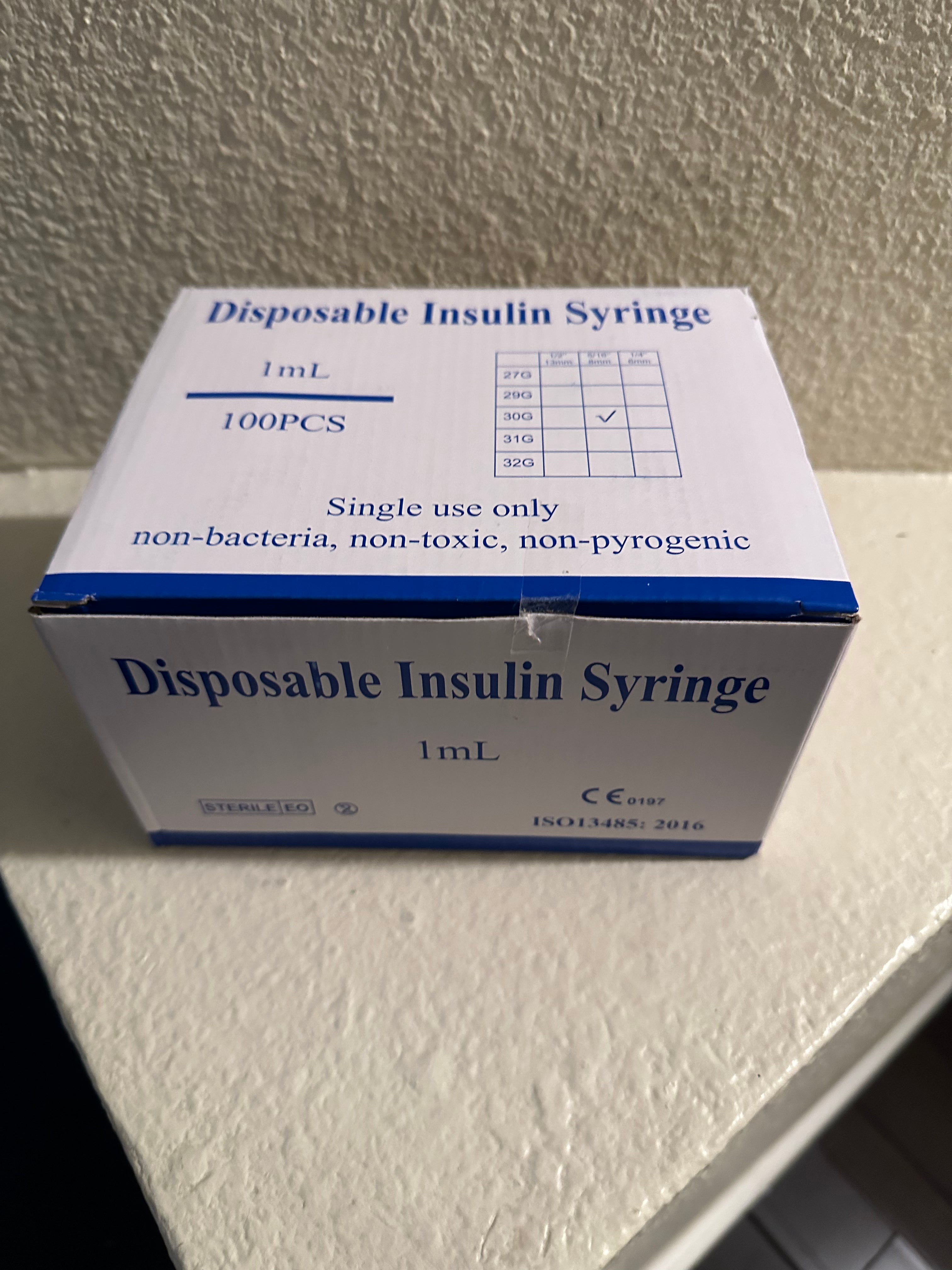
Syringes box
This is basically an AMAZON price match. I want you to be able to get everything you need in a one stop shop and if you want an entire box along with your peptides to save money, let's freaking go. Let's be real for a second, though, I can do this because I have low overhead, but I do not have unlimited space and free shipping isn't really free, so for now, researchers will be limited to 1 box WITH their peptide purchase.
100 Syringes 30 gauge 5/16" long 1mL
Used for the reconstitution and transfer of research only chemicals to and from vials. Research only chemicals are not approved by the FDA for use in humans.
Using insulin needles carries several potential dangers, particularly when they are reused, shared, or used improperly.
1. Infection and Disease Transmission:
-
Sharing Needles: This is the most dangerous risk. Sharing needles or multi-dose insulin pens can transmit bloodborne pathogens such as HIV, Hepatitis B, and Hepatitis C, even if the needle is changed. Backflow of blood and other bodily fluids can contaminate the pen's reservoir.
- Reusing Needles: Reusing a needle can introduce bacteria from the skin into the injection site, leading to infections, abscesses, or other skin complications. Studies have found bacteria on reused needles, and there have been reports of serious infections, including a case of Mycobacterium chelonae and even tuberculosis at injection sites.
2. Physical Damage and Complications:
Blunted Needle Tips: A key danger of reusing needles is that the ultra-fine tip becomes blunted and bent after the first use. This can lead to significant pain, bleeding, and bruising upon injection.
Lipohypertrophy: This is a condition where fatty lumps or scar tissue form under the skin at frequently used injection sites. It is caused by repeated minor trauma to the same area. These lumps can not only be unsightly but also interfere with insulin absorption, leading to inconsistent blood sugar levels and an increased risk of hypoglycemia (low blood sugar).
Needle Breakage: Excessive reuse (more than seven times) can cause microscopic pieces of the needle tip to break off and potentially remain in the patient's body.
3. Dosing and Medication Errors:
-
Inaccurate Dosing: Reusing needles can cause air to enter the pen's reservoir, leading to air bubbles and inaccurate dosing. Additionally, improper storage of pens with an attached needle can cause insulin to leak out.
-
Injection into Muscle: Insulin needles are designed for subcutaneous (under the skin) injection. Injecting into muscle can cause the insulin to be absorbed too quickly, leading to a rapid drop in blood sugar and a higher risk of severe hypoglycemia. This can be a danger, especially with longer needles.
Needlestick Injuries: Insulin needles pose a risk of needlestick injuries to healthcare workers, which can transmit infectious diseases and cause emotional distress. The practice of recapping needles is a major risk factor for these injuries.




